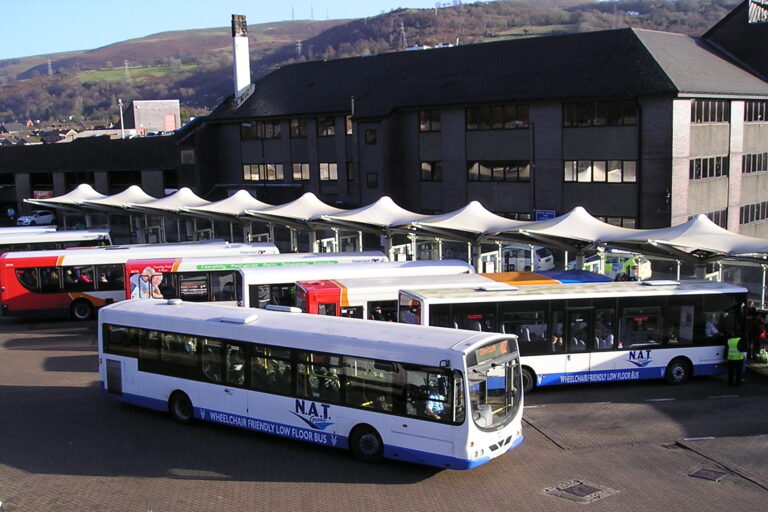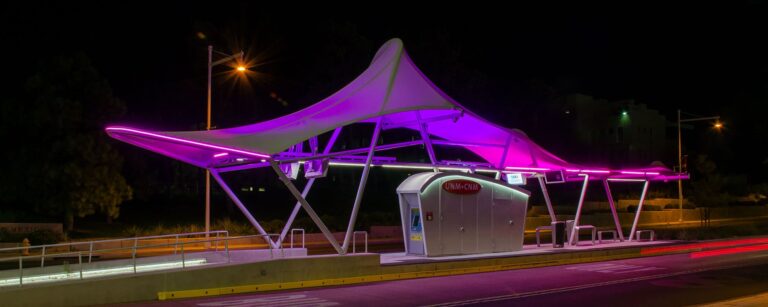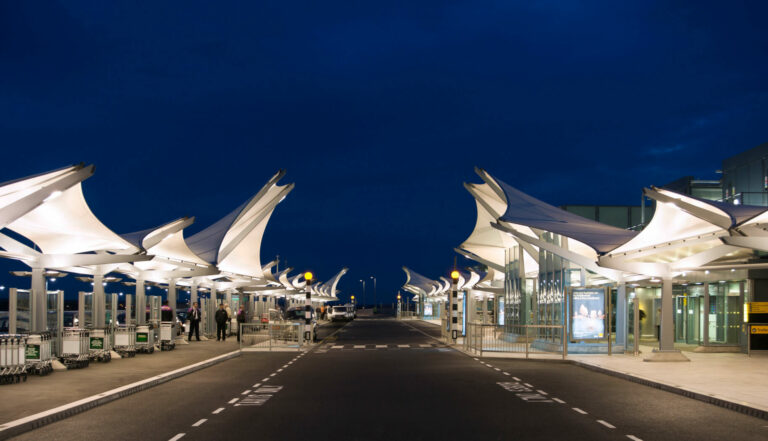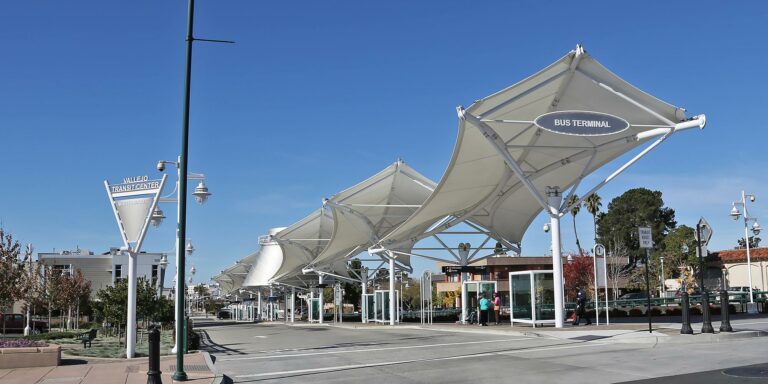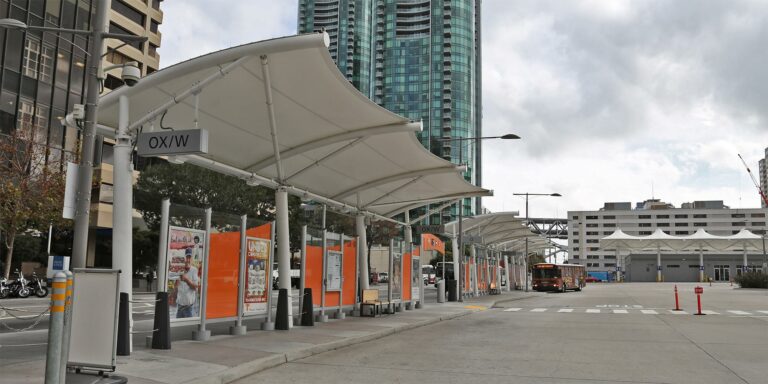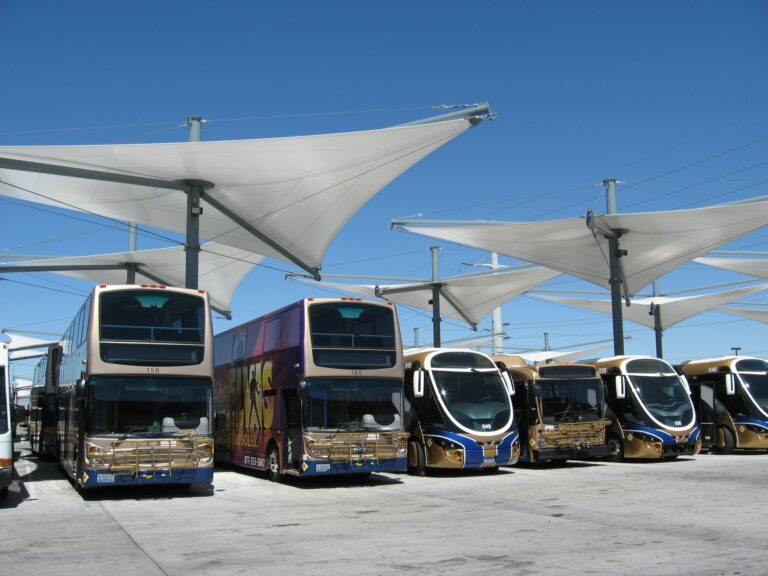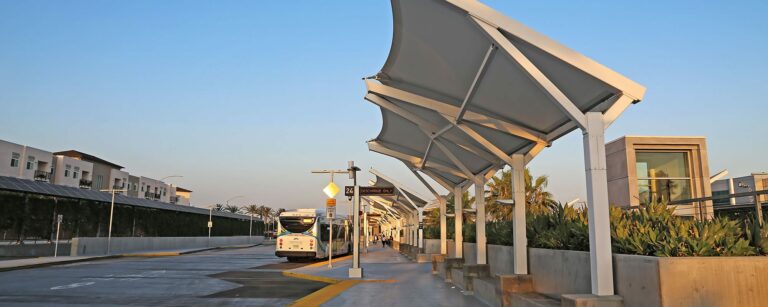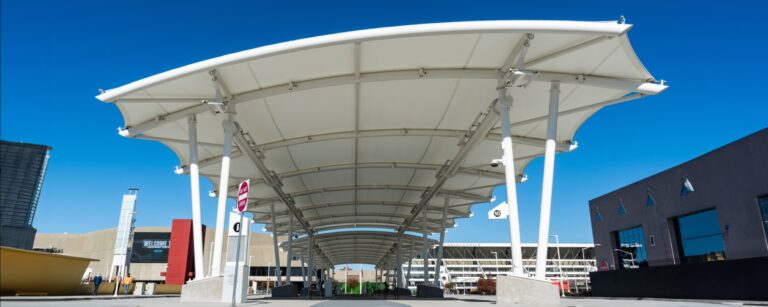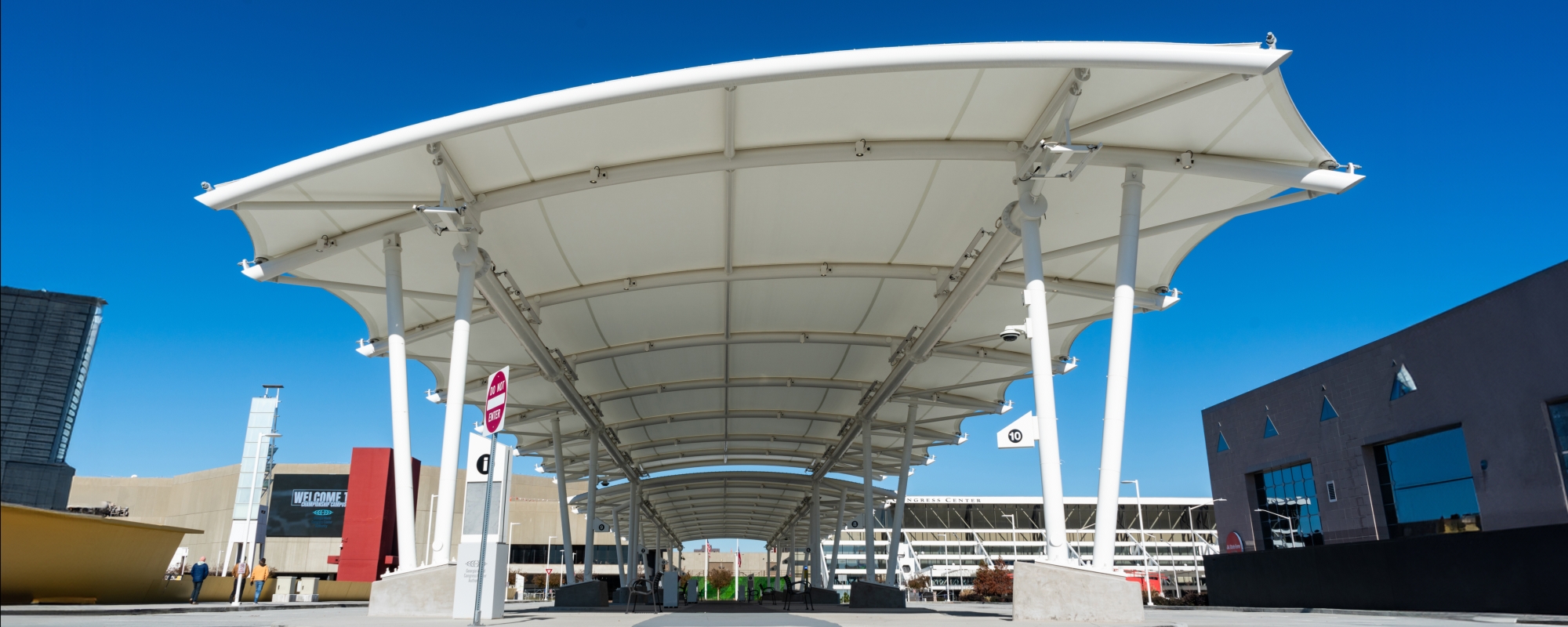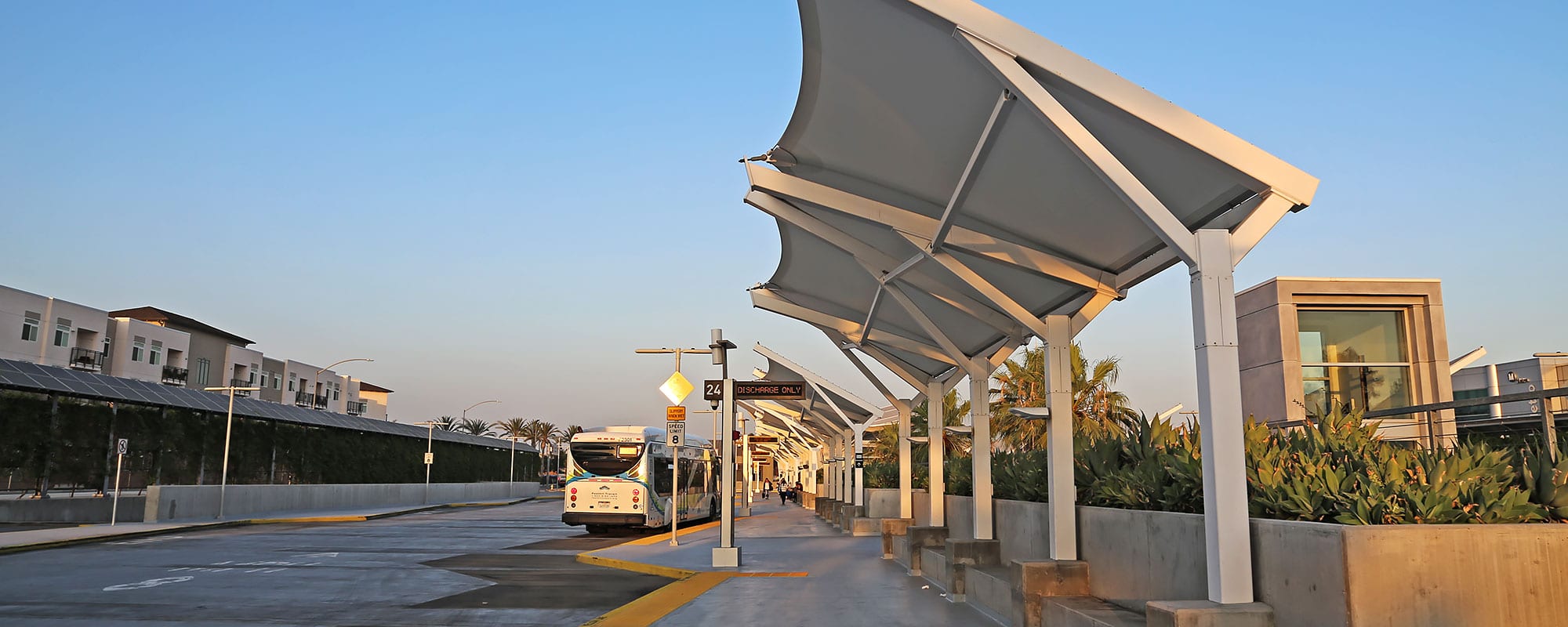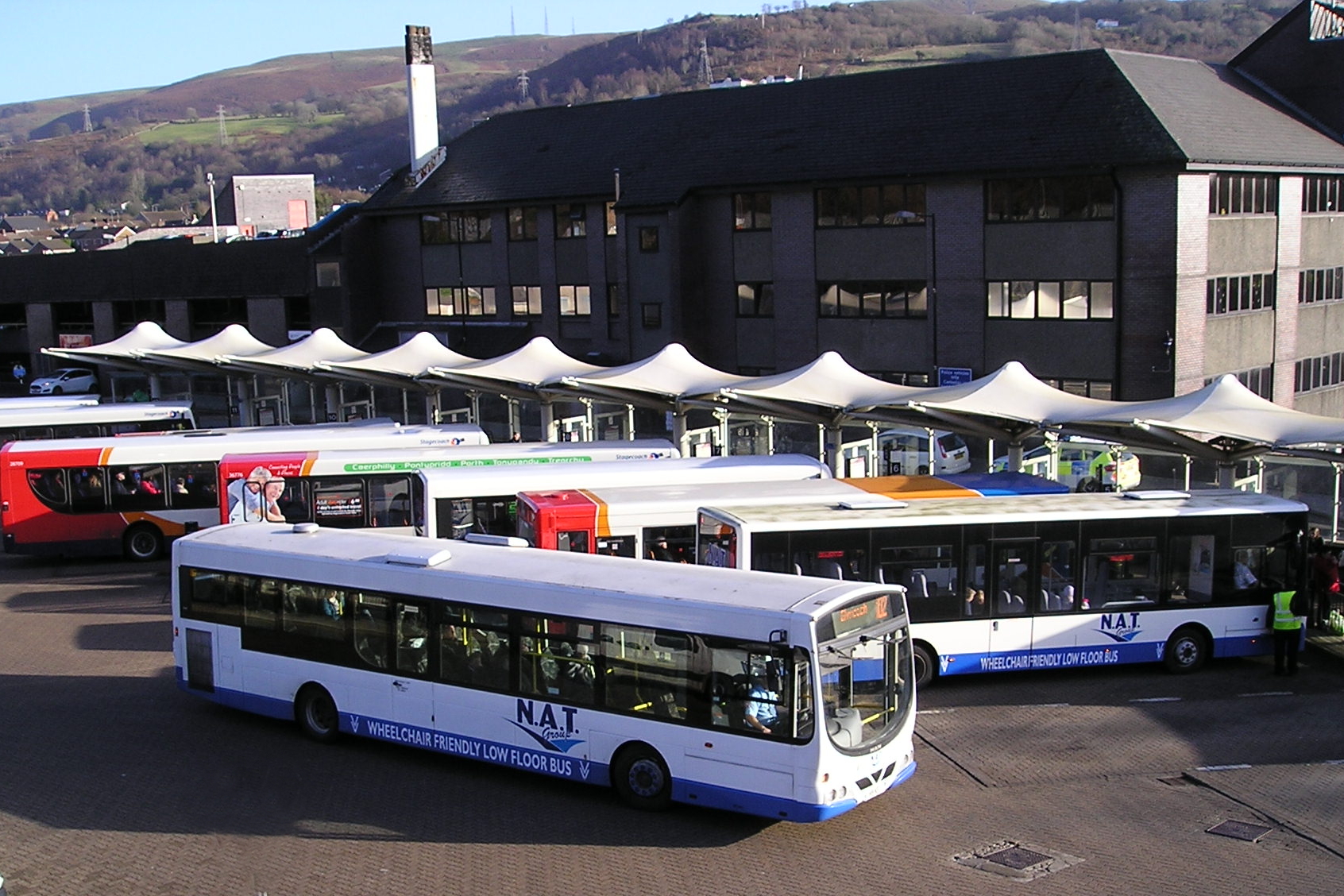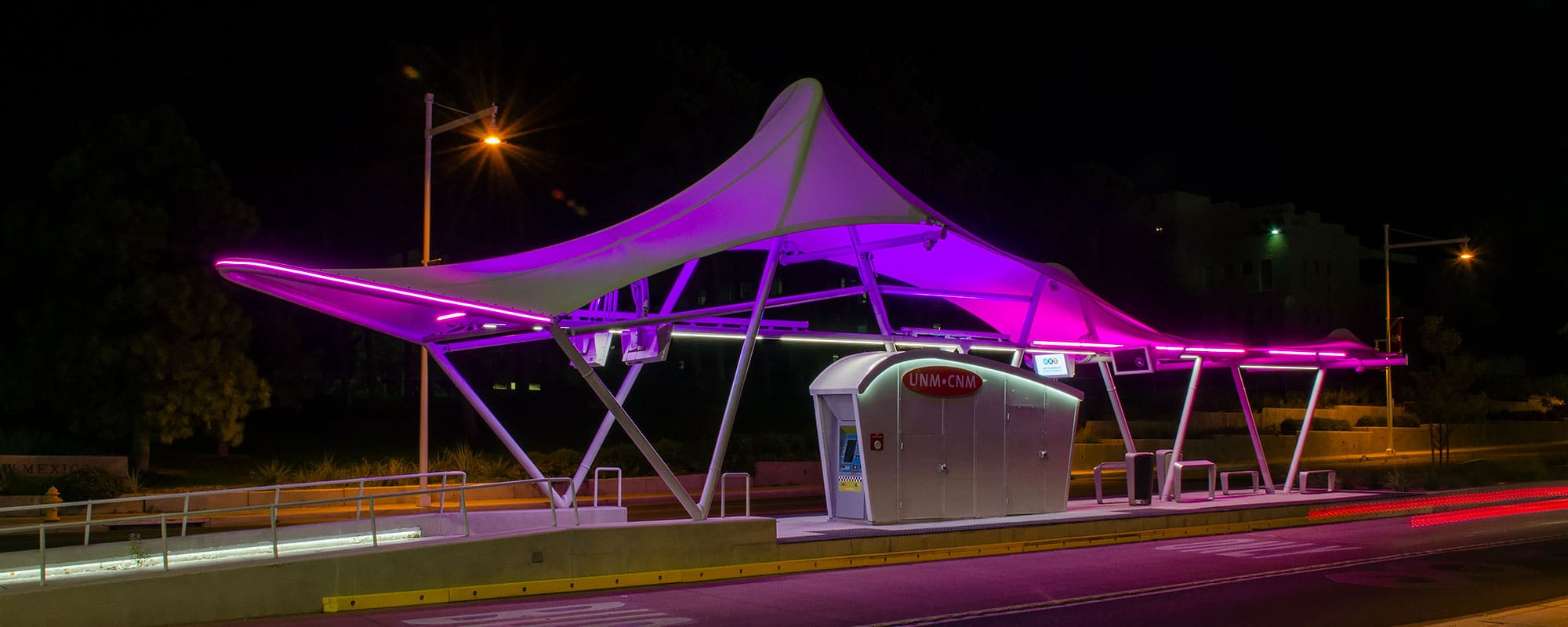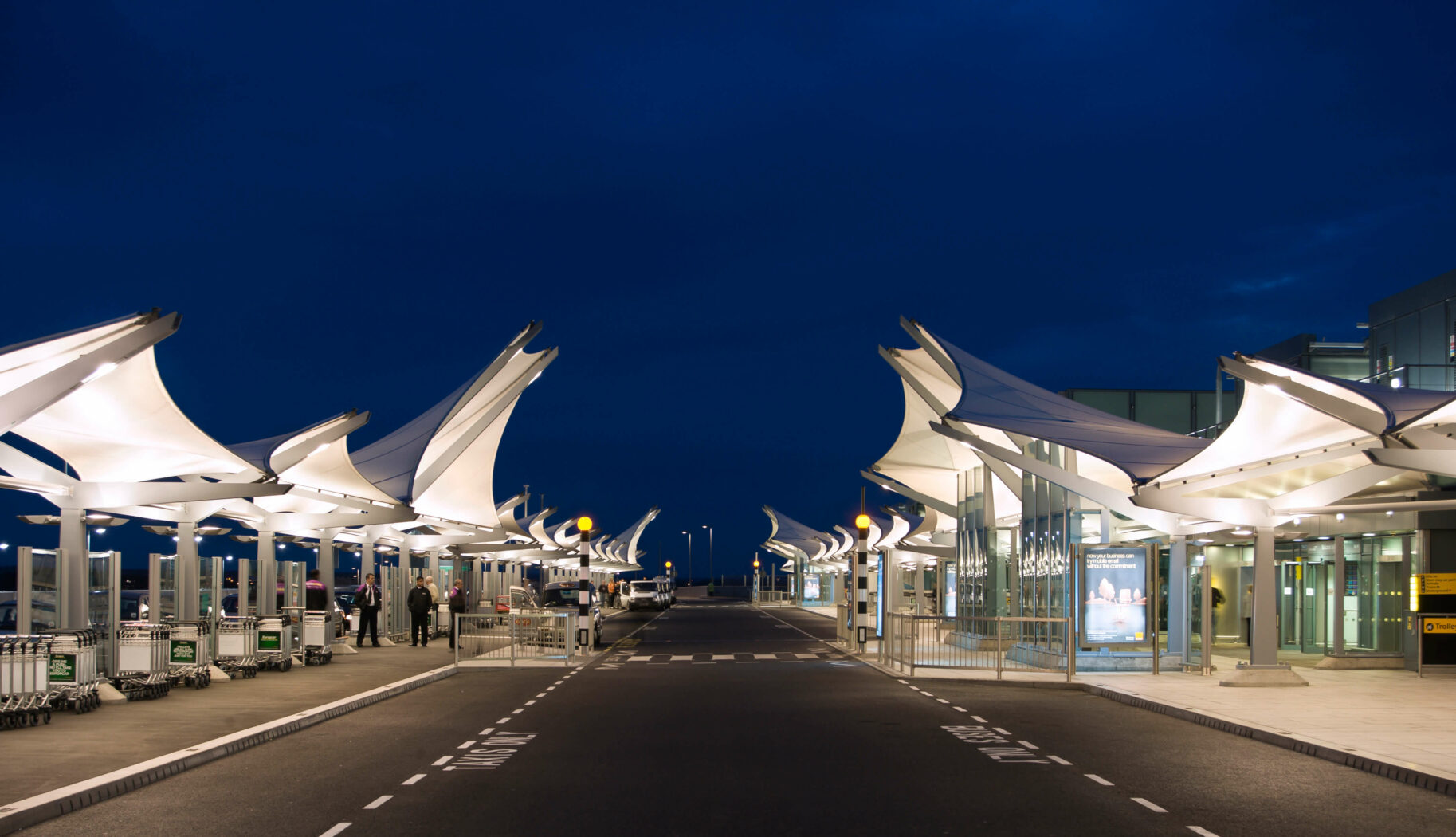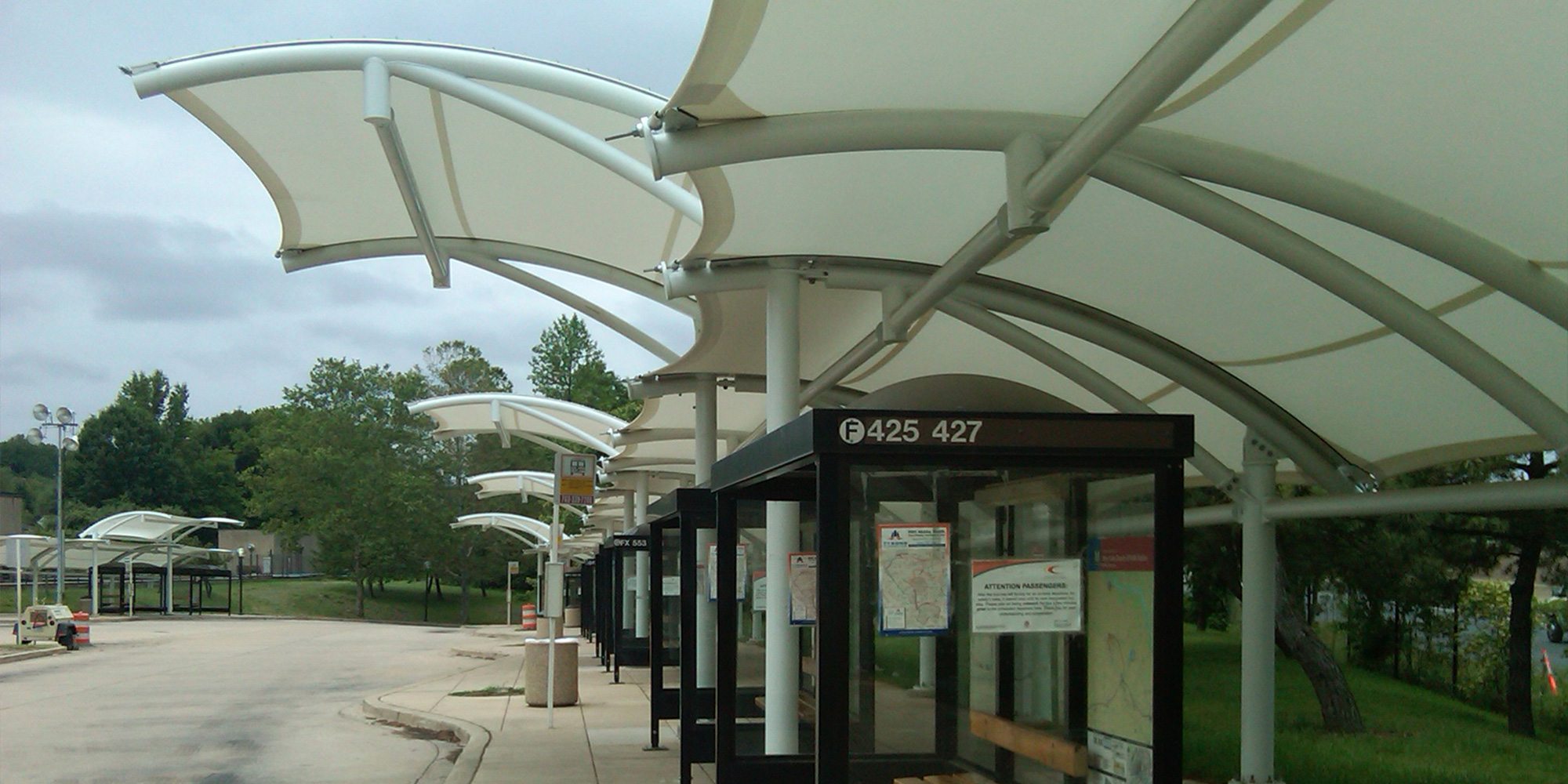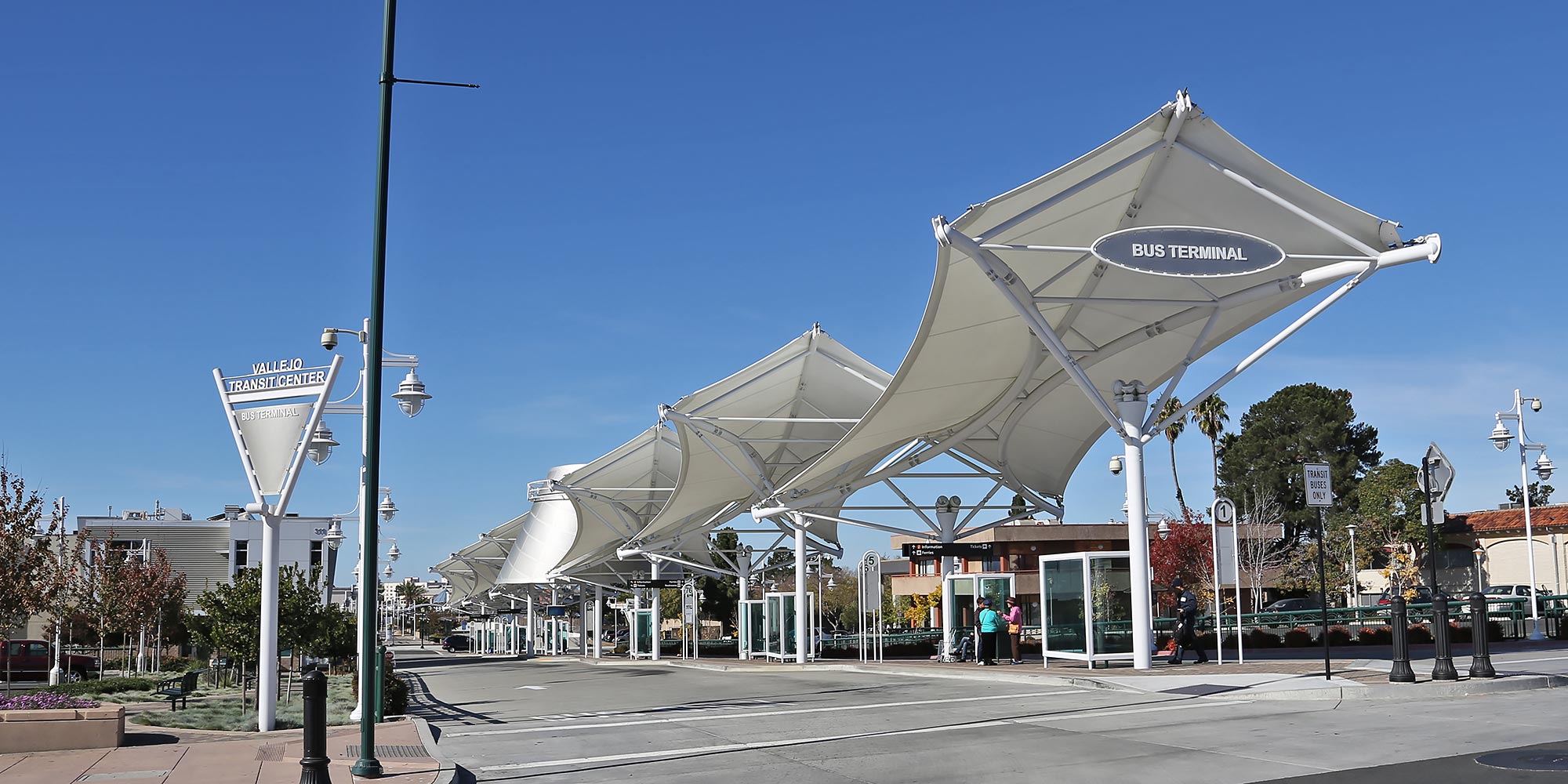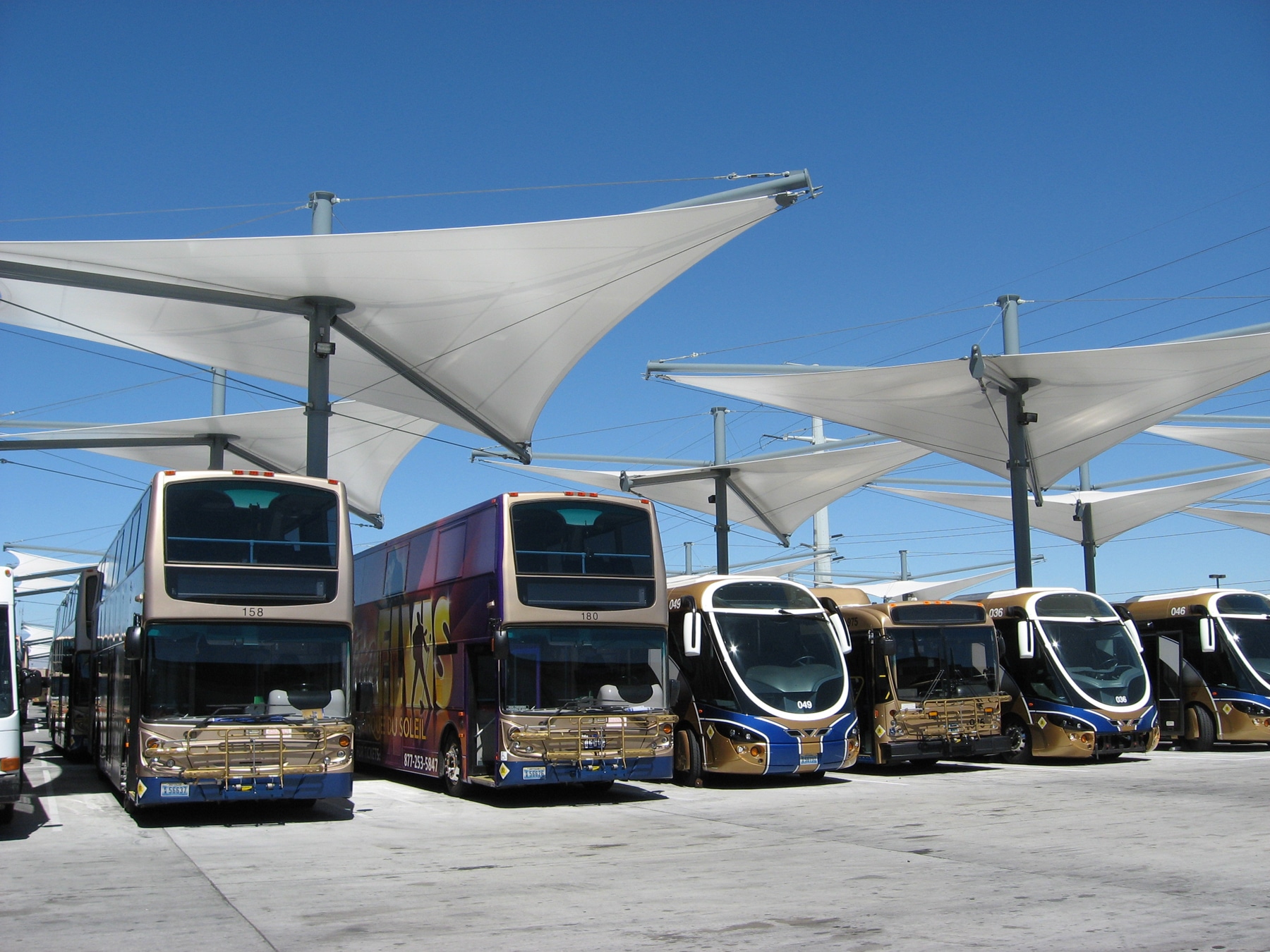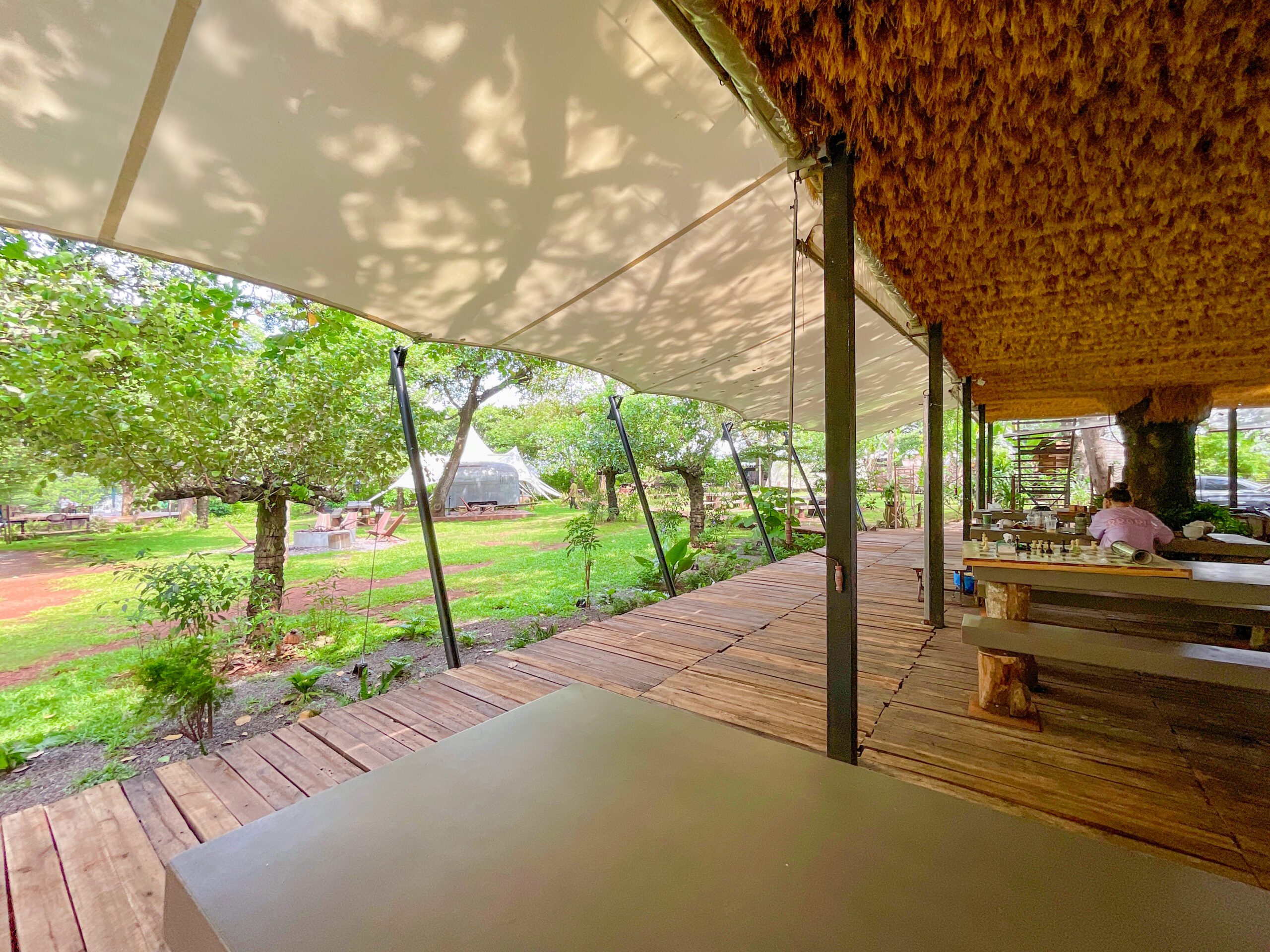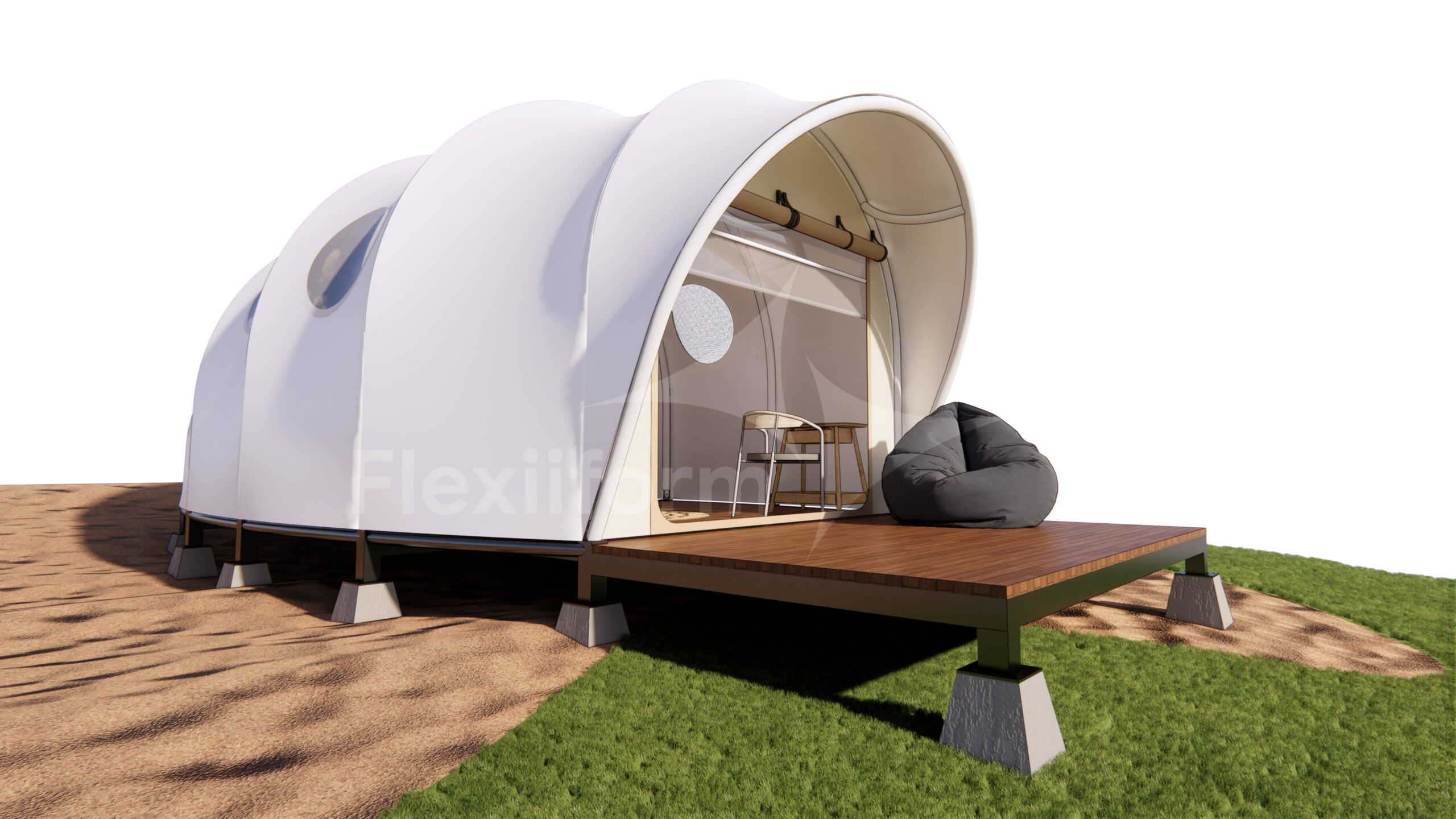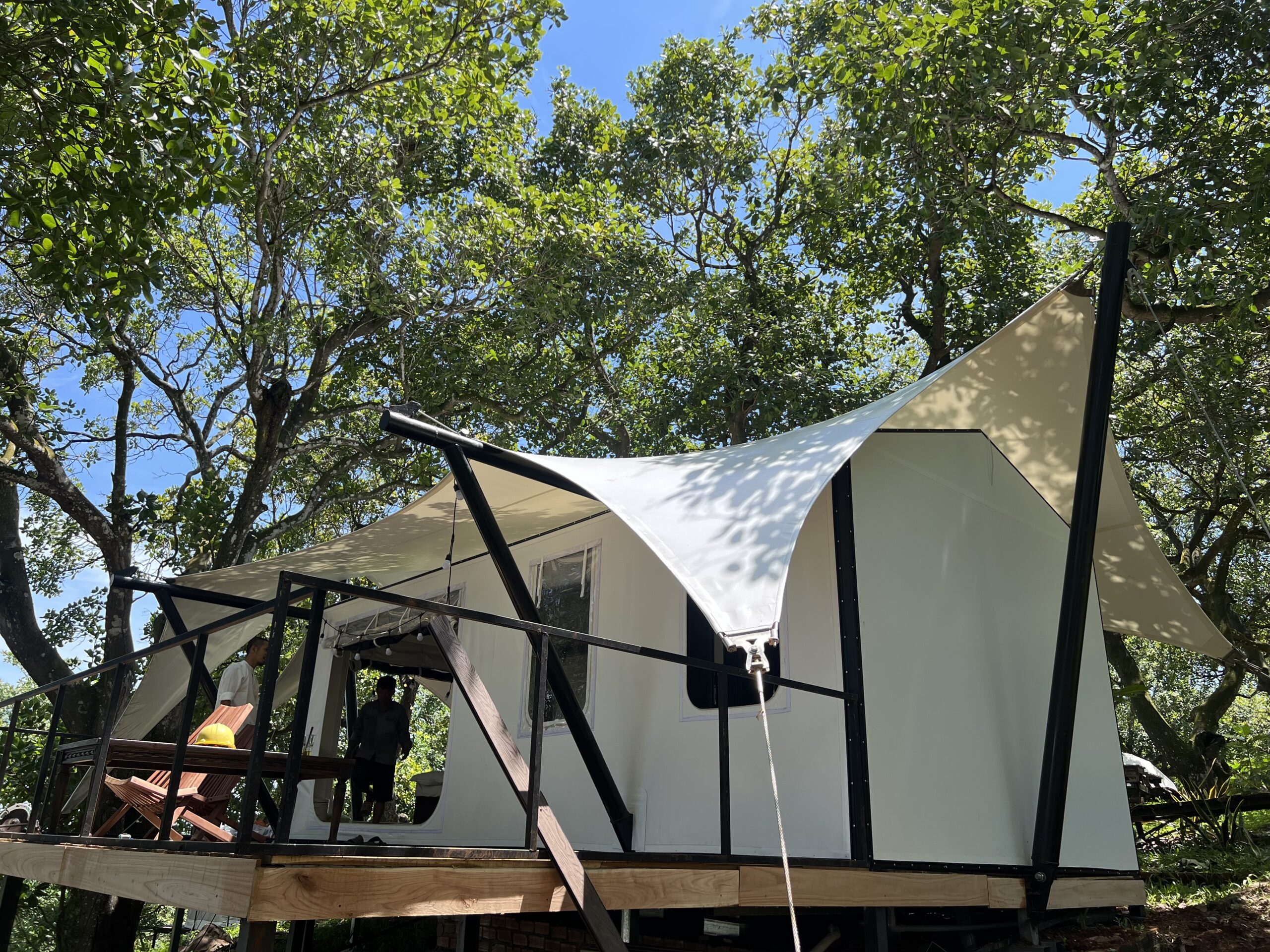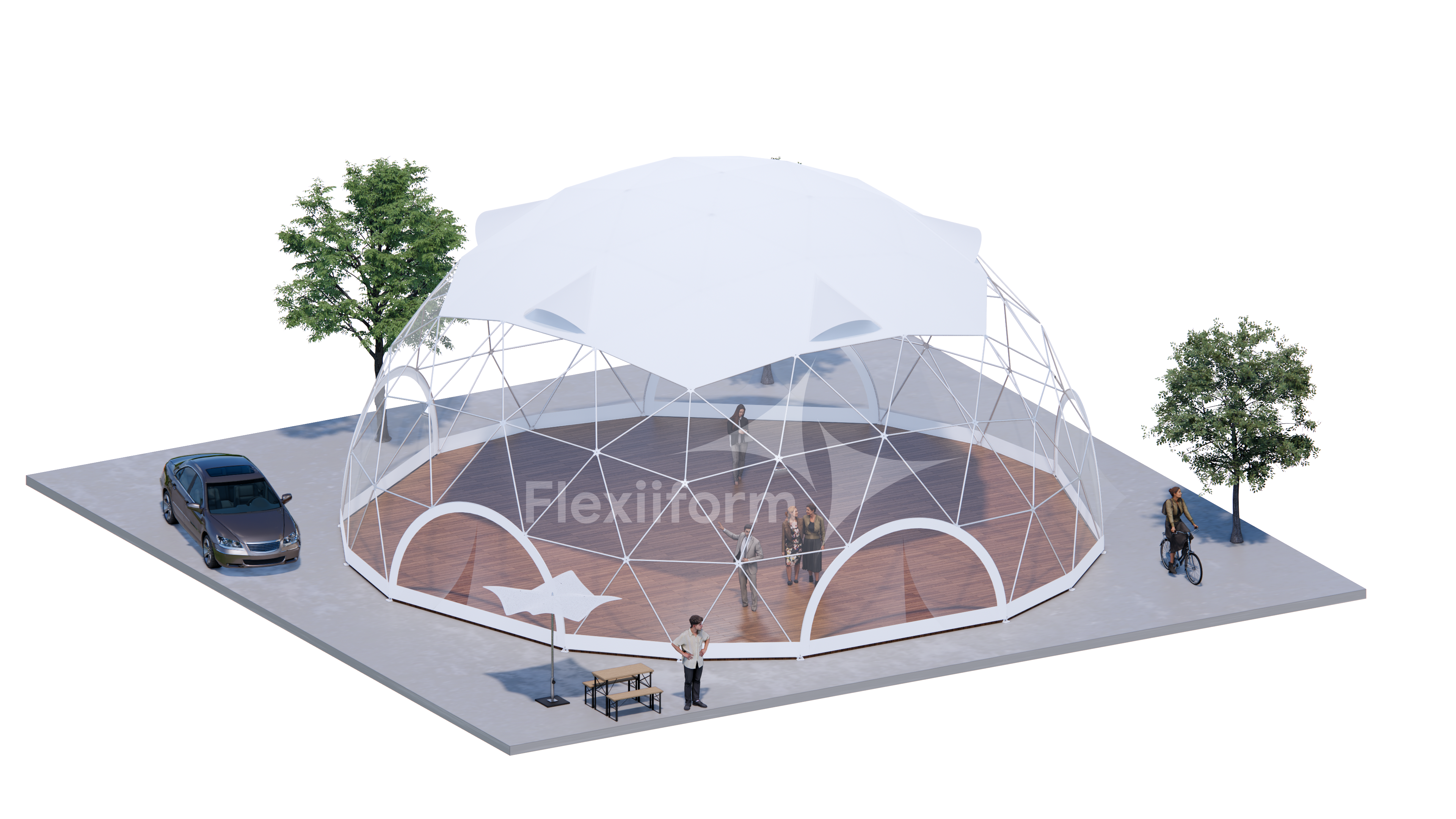Current Situation and Solution: Top 10 Bus Stop Canopies Worth Investing In 2024 by Flexiiform
Bus station canopies not only bring comfort and convenience to commuters but also play an important role in protecting passengers from the effects of harsh weather, while creating a strong architectural impression for urban spaces. In the context of major cities around the world constantly improving their public transport systems, investing in modern, sustainable and aesthetic bus station canopies is an essential need. Below is a list of the Top 10 typical bus station canopies, designed with advanced tensile fabric materials, helping to improve the user experience and enhance the aesthetics of public spaces, worthy of being an investment choice in 2024.
Technical Requirements & Context Analysis
The context of rapid urbanization and the increase in public transport places high technical demands on transport infrastructure. Bus stations are crowded places, easily affected by heat, storms, and pollution. Traditional roofing solutions are often heavy, lack aesthetics, and do not optimize ventilation. The technical challenge is to find a roofing solution that is lightweight, durable, resistant to harsh weather, optimizes natural light and ventilation, and is also aesthetically pleasing to contribute to the beauty of urban architecture. Bus station roofs made of tensile fabric structures are the optimal solution for these requirements.
Technical Solutions and Implementation Process
Bus station canopy solutions using tensioned fabric structures are implemented based on advanced technical principles and professional construction processes, bringing optimal efficiency to urban traffic infrastructure projects.
Typical Types of Bus Station Canopies Using Tensioned Canvas Structure
Convention Center Bus Canopy in Georgia, USA
With a creative over-span dome design made from stretched canvas, the bus station canopy here not only provides shade and rain protection for passengers but also creates an extremely airy space, without being stuffy and stuffy but still fully effective. This is a typical example of optimizing functional space and aesthetics.

Bus stop canopy_Georgia National Convention Center | Photo source: Internet Bus canopy in Tawang, India
Specially designed with sustainable and visually appealing materials, using minimalist materials for the bus stop canopy design from stretch canvas has helped to maximize the function of the bus canopy while optimizing sidewalk space, enhancing the architectural aesthetic form of the area.

Bus stop canopy_Tawang India | Photo source: Internet Bus stop canopy in Pontypridd, Wales, UK
With an impressive design of a conic shape spanning a continuous span, the canopy of the bus station in Pontypridd, UK creates a creative highlight for the space and landscape of the bus station with many passengers moving around. The canopy here not only enhances the aesthetics of the area but also maximizes the utility of the tensile fabric canopy architecture: light, durable and meets the requirements for sun and rain protection.

Bus stop canopy_Pontypridd | Photo source: Internet Albuquerque, New Mexico bus station canopy
The Albuquerque Rapid Transit (ART) project in New Mexico includes two components: road improvements and bus terminal construction. For the bus terminal construction, the project created a bus station canopy design with a tensile fabric structure integrated with an LED lighting system, providing an aesthetic space during both the day and night.

Albuquerque bus station canopy, New Mexico | Photo source: Internet Canopy of the bus terminal at Heathrow Airport, London, UK
As one of the first areas of Terminal 5 at Heathrow Airport, the design was not only innovative and modern but also had to ensure passenger safety. The project included over 4,000m² of PTFE (Polytetrafluoroethylene) fabric canopy that spanned the entire length of the airport terminal entrance lanes. The eye-catching design used a number of twisted hypar arrangements stretched over an architectural steel frame complete with bespoke lighting. The expansive ripples of the fabric not only served as a shelter for passengers below but also served as a striking architectural feature. PTFE was chosen over PVC to provide a number of benefits including increased transparency, greater durability, improved fire resistance and lower dust retention.

Canopy of the arrival hall at Heathrow Airport, London, UK | Photo source: Internet Canopy of West Falls Church Station, Washington, USA
Completed in 2010, the bus shelter at West Falls Church Station, Washington not only meets aesthetic requirements but is also suitable as a sidewalk shelter with the load-bearing structure, safety, durability and fire resistance of PTFE fabric.

Bus stop canopy_West Falls Church | Photo source: Internet Bus Stop Canopy at Vallejo Transit Center – Contemporary Architectural Highlight
The Vallejo Transit Center in California features a unique tensile membrane canopy, providing a public space that is not only functional but also aesthetically pleasing. The canopy system uses high-quality PVDF (Polyvinylidene Fluoride) material, with soft curves and a unique layout, creating an impressive and modern look for the bus stop. The canopy design is built with a sturdy steel structure, which supports durable tensile fabric panels that can withstand all weather conditions. The canopy shapes resemble sails in the wind, creating a graceful and elegant look, while also providing shade for people waiting for the bus. In addition to providing protection from the sun and rain, the Vallejo bus station canopy is also an important part of enhancing the public transit user experience, with natural light during the day and effective LED lighting at night, creating a sense of safety and convenience.

Bus Stop Canopy At Vallejo Transit Center | Photo source: Internet Transbay Bus Station Canopy – A Combination of Modern Architecture and Function
The Transbay Bus Station Canopy is a prime example of modern and convenient architecture in the public transport system. Using a tensile membrane structure, this canopy provides an open, airy space while protecting passengers from the elements. The soft curved design of the canopy combined with sturdy steel frames creates an elegant shape while still ensuring durability against harsh weather conditions. With the pillars arranged reasonably and tightly connected to the fabric cover, the canopy provides people with a cool shelter in the summer and a comfortable space when it rains. The highlight of this design is the ability to cover a large area, providing enough space for a large number of people waiting for the bus. The glass walls come with neatly arranged advertising signs and itinerary information, making it easy for people to access information and creating a professional public transport environment. The canopy not only brings modern aesthetics but also plays an important role in improving the quality of transportation services at the Transbay Station. With integrated lighting systems and smart layouts, the bus waiting space becomes safe and convenient, regardless of the time of day.

Transbay bus station canopy | Photo source: Internet Canopy At RTC Sunset Maintenance Facility – Minimalist And Efficient Architecture For Bus Maintenance Space
RTC Sunset Maintenance Facility features a minimalist yet highly effective tensile membrane canopy design. This canopy structure is widely used in bus parking lots to shield and protect vehicles from the sun and other weather conditions. The canopy is constructed from PVDF membrane, which is lightweight and UV resistant, ensuring a long life and low maintenance. The simple yet modern design features tall steel columns that keep the fabric panels stable and sturdy. The soft curves of the canopy create a sophisticated and harmonious appearance with the surrounding open space, while allowing good air circulation, helping to cool the space below. The main function of this canopy system is to protect expensive buses from environmental impacts, helping to preserve the quality of the vehicle for a long time. Additionally, this lightweight canopy is capable of covering large areas with minimal installation and maintenance costs, making it an ideal solution for maintenance and parking areas. Durable, environmentally friendly, and easily customizable, the canopy at the RTC Sunset Maintenance Facility is a great choice for public transportation facilities looking to combine aesthetics and efficiency.

Canopy At RTC Sunset Maintenance Facility | Photo source: Internet RTC Centennial Plaza Transit Center Canopy – Elegant and Efficient Tension Fabric Design for Transit Center
The RTC Centennial Plaza Transit Center stands out with its tensile membrane canopy, designed to create a spacious and airy space and protect passengers from harsh weather conditions. This canopy system not only protects against rain and sun but is also brightly lit, enhancing visibility and safety at night. The canopy design uses PVDF membrane material, which is light, durable and weather-resistant. The steel frame holds the tensile membrane panels stably, making the structural system sturdy but still maintaining its elegance. The modern LED lighting system is directly integrated into the structure, evenly illuminating the entire pick-up area, bringing a sense of safety and comfort to passengers at night. The canopy not only plays an important role in protection but also brings high aesthetics with soft curves and a gentle structure. This helps the transit center look modern, environmentally friendly, and easily becomes an architectural highlight for the surrounding urban area. The RTC Centennial Plaza Transit Center is more than just a transit hub, it is a public space designed to optimize the user experience, from weather protection to architectural aesthetics.

RTC Centennial Plaza Transit Center Canopy – Elegant and Efficient Tension Fabric Design for Transit Center
Results and Performance Evaluation
Investing in bus stop canopy solutions using tensile fabric structures has brought about outstanding results and efficiency, as demonstrated through real projects around the world. These solutions not only significantly improve the passenger experience by providing a comfortable waiting space, protected from the weather elements, but also contribute to enhancing the aesthetics and modernizing the urban landscape.


